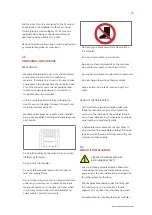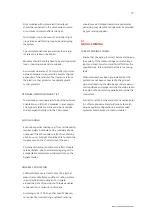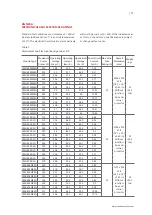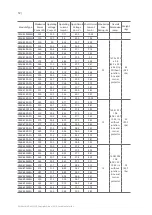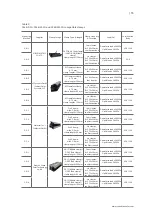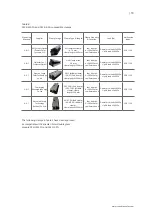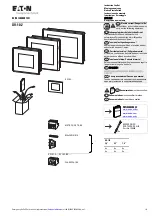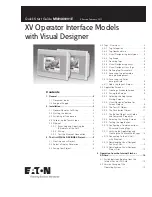
EN-Rev IM-FDM-EU/1.7 Copyright © April 2019. Canadian Solar Inc.
6 |
have been qualified for Application Class A
(equivalent to Safety Class II requirements).
Modules rated under this class should be used in
systems operating at voltage above 50 V or power
above 240 W, where general contact access is
anticipated.
· Canadian Solar Inc. double glass modules have
been certified by CSA as Type 3 or Type 13 and by
VDE as Class A for fire performance, please refer
to the datasheet or the product nameplate for the
detailed types.
· Consult your local authority for guidelines and
requirements for building or structural fire safety.
UL 1703 SYSTEM FIRE RATING REQUIREMENTS
· The fire rating for this module is only valid when
the product is installed as specified in the mechani
-
cal mounting instructions.
· When installing the modules on rooftop, ensure
the assembly is mounted over a fire resistant
roof covering rated for the application.
· A photovoltaic system composed of UL1703
certified modules mounted on a UL2703 certified
mounting system should be evaluated in combina-
tion with roof coverings in accordance with UL1703
standard, with respect to meeting the same fire
classification as the roof assembly.
· Mounting systems with a System Fire Class Rating
(Class A, B or C), tested in conjunction with fire
rated “Type 3” or “Type 13” rated modules, are
considered acceptable for use with Canadian Solar
Inc. modules, provides the mounting system does
not violate any other requirements of this manual.
· Any mounting system limitations on inclination or
accessories required to maintain a specific System
Fire Class Rating should be clearly specified in the
installation instructions and UL2703 certification of
the mounting system supplier.
ENVIRONMENTAL CONDITIONS
· The module is intended for use in general open-air
climates, as defined in IEC 60721-2-1: Classification
of environmental conditions Part 2-1: Environmental
conditions appearing in nature - temperature and
humidity.
· Please consult the Canadian Solar Inc. technical
support department for more information on the
use of modules in special climates.
Do not
install modules near open flames
or flammable materials.
Do not
immerse modules in water or
constantly expose modules to water
(either fresh or salt) (i.e. from fountains,
sea spray).
· Exposing modules to salt (i.e. marine environments)
or sulfur (i.e. sulfur sources, volcanoes) incurs the
risk of module corrosion.
· Failure to comply with these instructions will void
Canadian Solar Inc. warranty.
INSTALLATION REQUIREMENTS
· Ensure that the module meets the general technical
system requirements. Ensure that other systems
components do not damage modules mechanically
or electrically.
· Modules can be wired in series to increase voltage
or in parallel to increase current. To connect modules
in series, connect the cables from the positive
terminal of one module to the negative terminal
of the next module. To connect in parallel, connect
the cables from the positive terminal of one
module to the positive terminal on the next module.
· Only connect the quantity of modules that corres-
ponds to the voltage specifications of the inverters
used in the system. Modules must
not
be connec-
ted together to create a voltage higher than the
maximum permitted system voltage, even under
the worst local temperature conditions.
· A maximum of two strings can be connected in
parallel without using over-current protection de-
vice (fuses, etc.) incorporated in series within each
string. Three of more strings can be connected in
parallel if an appropriate and certified over-current
protection device is installed in series with each
string.





